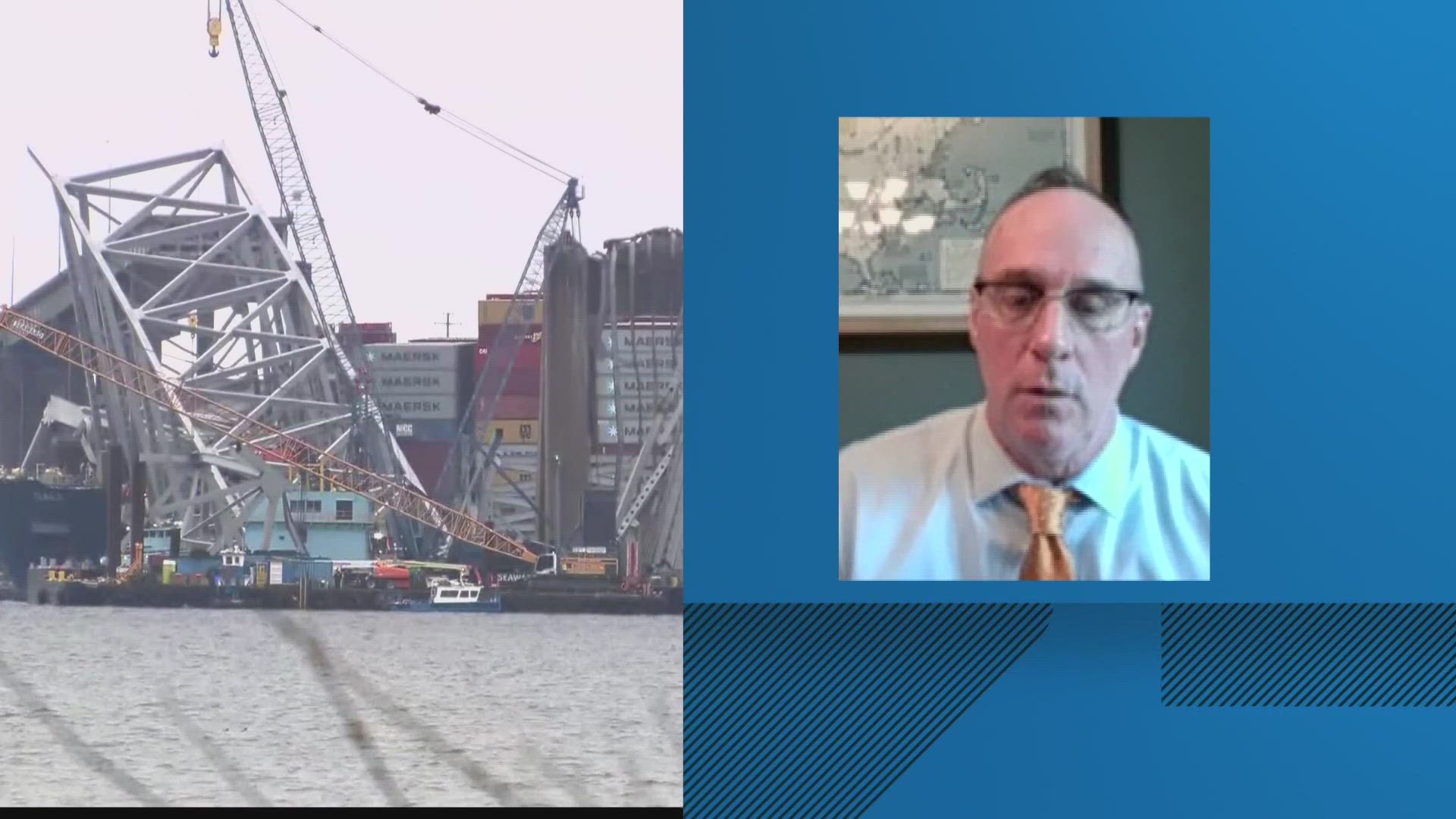BALTIMORE — Oceangoing ships could be able to call on the Port of Baltimore as early as the last week of April, according to a new tentative timeline released late Thursday by the U.S. Army Corps of Engineers (USACE).
The Corps announced a plan to open a limited access channel 280 feet wide and 35 feet deep, to the Port of Baltimore within the next four weeks.
The channel was blocked when the Francis Scott Key Bridge collapsed March 26 after being struck by the Dali, a large container ship which remains trapped and tangled in the wreckage.
“This channel would support one-way traffic in and out of the Port of Baltimore for barge container service and some roll on/roll off vessels that move automobiles and farm equipment to and from the port,” according to the announcement.
USACE engineers are aiming to reopen the permanent, 700-foot-wide by 50-foot-deep federal navigation channel by the end of May, restoring port access to normal capacity.
“These are ambitious timelines that may still be impacted by significant adverse weather conditions or changes in the complexity of the wreckage,” said Lt. Gen. Scott A Spellmon.
“We are working quickly and safely to clear the channel and restore full service at this port that is so vital to the nation. At the same time, we continue to keep faith with the families of the missing and are working with our partners to help locate and recover their loved ones.”
Engineers had begun contemplating the possibility of clearing a single lane of Baltimore’s shipping channel after viewing sonar images of the wreckage on the bottom.
U.S. Army Corps of Engineers Col. Estee S. Pinchasin said Wednesday that the east side of the channel opposite from the stranded ship may provide an opportunity to move debris that is not complicated by being tangled directly with the ship.
"As we get deeper into the channel on that far side, and clear deeper wreckage from the far side of the channel, were hoping to be able to traffic larger vessels through, said Pinchasin on Wednesday.
The Dali blocks only a portion of the 50-foot deep channel on one side. The channel is wide enough for two ships to pass, if debris is removed from the far side, Pinchasin said.
While the largest ships require a 50-foot deep channel, many smaller ships, including roll-on-roll-off car carriers critical to the import and export of autos and farm machinery, require only 35 feet, and could begin accessing the port with a partial reopening, according to William Doyle, the CEO of The Dredging Contractors of America.
Two shallow side channels now marked by the US Coast Guard are allowing limited barge traffic to access the port. The channels are 11-feet and 14-feet deep respectively, which is not enough to accommodate oceangoing ships.
Doyle said contractors could dredge one of those side channels to 20 feet relatively quickly, which would allow deeper drafting barges to carry containers to and from other regional ports like Norfolk and Philadelphia, which would be likely provide relief to some shippers.
Engineers continue to work with local, state, and federal partners to clear the channel at this time.
WATCH NEXT:
Do you have a news tip on this story or any other story? We want to hear from you. Tell us about it by emailing newstips@wusa9.com.
MORE WAYS TO GET WUSA9
DOWNLOAD THE WUSA9 APP
Apple App Store: WUSA9 News on Apple
Google Play Store: WUSA9 News on Android
HOW TO ADD THE FREE WUSA9+ APP TO YOUR STREAMING DEVICE
ROKU: add the channel from the ROKU store or by searching for WUSA9.
For both Apple TV and Fire TV, search for "WUSA9" to find the free app to add to your account. Another option for Fire TV is to have the app delivered directly to your Fire TV through Amazon.
SIGN UP TO RECEIVE WUSA9 NEWSLETTER
Subscribe to our daily WUSA9 Newsletter for top stories from WUSA9 curated daily just for you. Get content and information right now for can’t-miss stories, Commanders content, weather, and more delivered right to your inbox.

